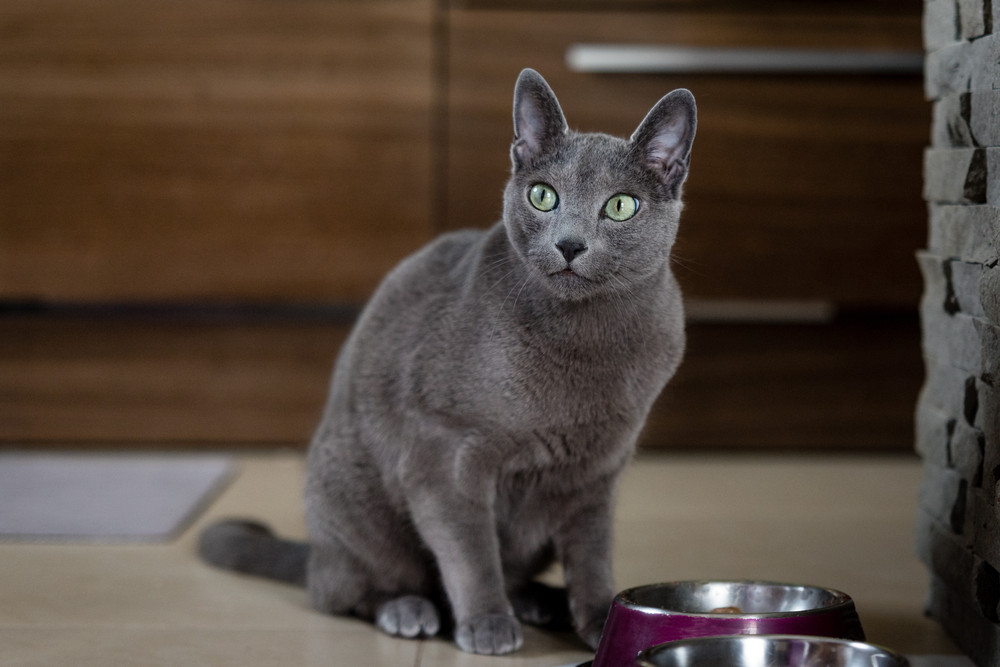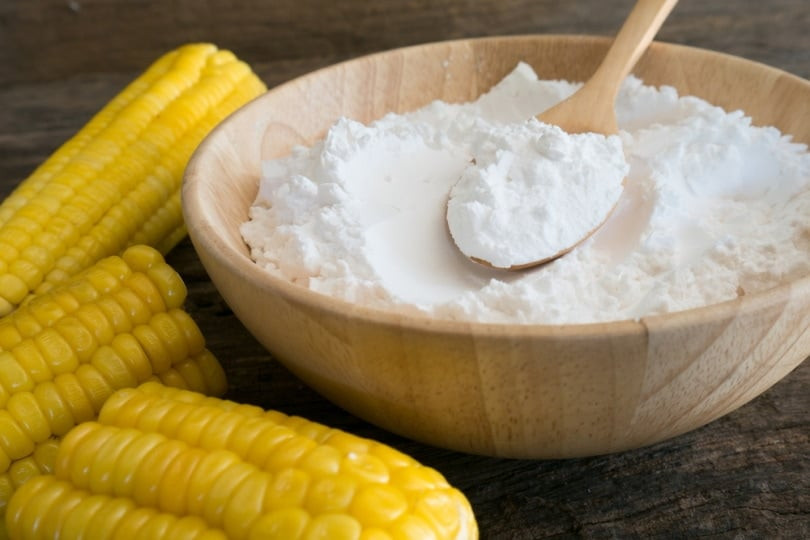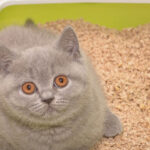Cornstarch isn’t an ideal cat food due to their carnivorous needs, but it’s not inherently harmful, and solcat.net provides more details. While not nutritionally complete on its own, cornstarch can be digestible and less allergenic than other carbs. Let’s explore cornstarch, feline diets, pet allergies, and digestible additives, with tips for cat owners.
1. Understanding Cornstarch and Cats: What You Need to Know
Can Cats Have Cornstarch? No, cornstarch is not a great food choice for your cat, it is neither toxic nor beneficial due to a cat’s dietary requirements. As obligate carnivores, cats require primarily meat-based diets with minimal plant matter. While cornstarch isn’t toxic, it offers little nutritional value to cats.
1.1 What is Cornstarch and Where Does it Come From?
What exactly is cornstarch? Cornstarch is a starch derived from corn kernels, primarily used as a thickening agent in cooking and baking.
1.2 Why Cats Are Obligate Carnivores
Why do cats need meat? Because cats are obligate carnivores, their bodies are designed to thrive on animal proteins, and they have limited ability to digest plant-based carbohydrates like cornstarch. This biological imperative shapes their nutritional needs significantly.
1.3 The Role of Carbohydrates in a Cat’s Diet
Do cats need any carbs? No, cats don’t need carbs, carbohydrates should only make up a small portion of a cat’s diet. While cats can digest cooked and processed carbohydrates, they don’t require them for optimal health. Overfeeding carbs can lead to digestive issues and weight gain.
2. The Nutritional Impact of Cornstarch on Cats
Is cornstarch healthy for cats? No, cornstarch is not a particularly healthy addition to your cat’s diet due to its limited nutritional value and high carbohydrate content. Cats need a diet rich in animal proteins and fats to thrive.
2.1 Lack of Essential Nutrients in Cornstarch
What nutrients are missing from cornstarch? Cornstarch lacks the essential nutrients that cats require, such as taurine, arginine, and specific fatty acids. These nutrients are primarily found in animal-based proteins and are crucial for feline health.
2.2 Potential Digestive Issues
Will cornstarch cause digestion issues in my cat? Yes, overconsumption of cornstarch and other carbohydrates can cause digestive upset and diarrhea in cats. Cats have shorter digestive tracts that are optimized for processing animal proteins, making them less efficient at digesting plant-based materials.
2.3 Long-Term Health Risks of Overfeeding Cornstarch
Can too much cornstarch hurt my cat long term? Yes, regularly feeding cats foods high in cornstarch can lead to obesity, diabetes, and other obesity-related diseases. These conditions can significantly impact your cat’s quality of life and lifespan.
3. Cornstarch as an Ingredient in Cat Food: When It’s Acceptable
When is cornstarch acceptable in cat food? Cornstarch is acceptable in cat food in small quantities, primarily as a binder or thickener. Its high digestibility and low allergenic potential make it a useful additive in certain formulations.
3.1 The Role of Cornstarch in Hydrolyzed Protein Foods
What are hydrolyzed protein foods? Hydrolyzed protein foods are specially processed to reduce proteins to the point where the immune system doesn’t recognize them. Cornstarch is often used in these foods as a binder and thickener because of its low allergenic potential.
3.2 Digestibility of Cooked and Processed Cornstarch
Why is cooked cornstarch more digestible? Because cooked and processed cornstarch is highly digestible, even for obligate carnivores. Cooking breaks down the starch molecules, making them easier for cats to process.
3.3 Limitations and Considerations
What are the limitations of cornstarch in cat food? Cornstarch shouldn’t be a primary ingredient in cat food due to its limited nutritional value. It should only be used in small amounts to serve specific purposes like binding or thickening.
 Cat looking longingly at food
Cat looking longingly at food
4. Alternative Uses of Cornstarch for Cats
Does cornstarch have other uses for cats? Yes, cornstarch has several alternative uses for cats, including grooming and litter box odor control.
4.1 Grooming Aid: Absorbing Oils and Reducing Greasiness
How can cornstarch help with grooming? Cornstarch can be used to absorb excess oils and reduce greasiness in a cat’s fur. Brushing cornstarch through their coat can help loosen up hair and break up tangles.
4.2 Litter Box Deodorizer
Can cornstarch deodorize a litter box? Yes, cornstarch can be used as a litter box deodorizer by sprinkling it directly into the litter and mixing well. It helps absorb excess moisture and trap odors, reducing mess and smells.
4.3 Potential Risks and Precautions
What are the risks of using cornstarch on cats? Using too much cornstarch on cats can lead to excessive dryness of the skin. It’s also important to ensure the cat doesn’t inhale large amounts of cornstarch, as it could cause respiratory irritation.
5. Expert Opinions on Cats and Cornstarch
What do vets say about cats eating cornstarch? Vets generally advise against feeding cats cornstarch directly due to its lack of nutritional value. It’s best to focus on a diet primarily composed of animal-based proteins.
5.1 Veterinarian Insights
According to Dr. Lorna Whittemore, a veterinarian reviewed and fact-checked the original article from which this article was inspired, while cornstarch itself isn’t harmful, it’s not an ideal food for cats due to their dietary needs.
5.2 Recommendations from Feline Nutrition Experts
What do feline nutrition experts recommend? Feline nutrition experts recommend that carbohydrates, including cornstarch, should only make up a small portion of a cat’s diet. The focus should be on providing high-quality animal proteins and fats.
5.3 Scientific Studies and Research
Have any studies looked at cats eating cornstarch? Yes, one study has indicated that cornstarch may be less allergenic to both dogs and cats than other carbohydrate sources like corn flour. This makes it a useful ingredient in hydrolyzed protein foods for pets with food allergies.
6. Identifying Potential Allergies and Sensitivities
How can I tell if my cat is allergic to cornstarch? Signs of a food allergy in cats include itchiness, hair loss, and digestive upset.
6.1 Common Symptoms of Food Allergies in Cats
What are the common symptoms of food allergies in cats? Common symptoms include excessive scratching, skin rashes, vomiting, and diarrhea.
6.2 Diagnostic Methods
How can a vet diagnose a food allergy? Vets may use elimination diets or allergy testing to diagnose food allergies. Elimination diets involve removing potential allergens from the cat’s diet and gradually reintroducing them to identify the culprit.
6.3 Management and Treatment Options
What are the treatment options for food allergies in cats? Treatment options include feeding hypoallergenic or limited-ingredient diets, managing symptoms with medications, and avoiding known allergens.
7. Safe Alternatives to Cornstarch in Cat Food
What are some safe alternatives to cornstarch in cat food? Safe alternatives to cornstarch in cat food include tapioca, potato starch, and pea starch.
7.1 Exploring Other Carbohydrate Sources
What are some other carbohydrate sources for cats? Other carbohydrate sources that are generally safe for cats in small amounts include rice, oats, and sweet potatoes.
7.2 Protein-Rich Alternatives
What are protein-rich alternatives for cats? Protein-rich alternatives include chicken, turkey, fish, and beef.
7.3 Balancing the Diet
How can I balance my cat’s diet? Balancing your cat’s diet involves ensuring they receive adequate amounts of protein, fats, and essential nutrients. Consult with a veterinarian or feline nutritionist to create a balanced meal plan.
8. Homemade Cat Treats: Should You Include Cornstarch?
Should I include cornstarch in homemade cat treats? It’s generally not recommended to include cornstarch in homemade cat treats due to its limited nutritional value.
8.1 Recipes to Avoid
What kind of recipes should I avoid for my cat? Avoid recipes that are high in carbohydrates, sugars, or artificial additives.
8.2 Healthy Ingredient Swaps
What are some healthy ingredient swaps for cat treats? Healthy ingredient swaps include using lean proteins like cooked chicken or fish, and small amounts of cat-friendly vegetables like cooked carrots or zucchini.
8.3 Portion Control and Moderation
How much cat treats should I give my cat? Treats should only make up a small portion of your cat’s overall diet. Moderation is key to preventing weight gain and digestive issues.
 Cat laying with paws out
Cat laying with paws out
9. Debunking Myths About Cornstarch and Cats
Are there any myths about cornstarch and cats? Yes, some myths suggest that cornstarch is a healthy or necessary part of a cat’s diet, but this is untrue.
9.1 Separating Fact from Fiction
What are some common myths about cornstarch? Common myths include the idea that cornstarch is a good source of energy for cats or that it can help with digestive issues.
9.2 Relying on Verified Information
Where can I find verified information about cat nutrition? Rely on verified information from veterinarians, feline nutrition experts, and reputable sources like the Cornell Feline Health Center.
9.3 The Importance of Consulting a Veterinarian
Why should I consult a veterinarian about my cat’s diet? Consulting a veterinarian ensures you receive personalized advice based on your cat’s specific health needs and dietary requirements.
10. Real-Life Scenarios: When Cats Accidentally Eat Cornstarch
What should I do if my cat accidentally eats cornstarch? If your cat accidentally eats a small amount of cornstarch, there’s usually no cause for concern. However, if they consume a large quantity or show signs of digestive upset, contact your veterinarian.
10.1 Immediate Steps to Take
What immediate steps should I take if my cat eats cornstarch? Monitor your cat for any signs of digestive upset, such as vomiting or diarrhea. Provide plenty of fresh water and ensure they have access to their regular food.
10.2 Monitoring Your Cat’s Behavior
What behavior should I monitor in my cat after it eats cornstarch? Monitor for changes in appetite, energy levels, and stool consistency.
10.3 When to Seek Veterinary Attention
When should I call a veterinarian? Call your veterinarian if your cat shows severe symptoms or if you’re concerned about their condition.
11. Understanding Cat Food Labels: Identifying Cornstarch Content
How can I tell if my cat food has cornstarch? Read the ingredient list on your cat food label to identify if cornstarch is present.
11.1 Deciphering Ingredient Lists
How can I decipher the ingredient list on my cat food? Ingredients are listed in descending order by weight, so cornstarch will be listed higher if it makes up a significant portion of the food.
11.2 Understanding Percentages and Ratios
What percentages and ratios should I look for in my cat’s food? Look for foods with high percentages of animal-based proteins and fats, and low percentages of carbohydrates like cornstarch.
11.3 Making Informed Choices
How can I make informed choices about my cat’s food? Educate yourself about feline nutrition and consult with your veterinarian to choose the best food for your cat’s needs.
12. How to Choose the Right Cat Food: A Comprehensive Guide
How do I choose the right cat food? Choose cat food that is high in animal-based proteins, moderate in fats, and low in carbohydrates.
12.1 Considering Age and Activity Level
How does age and activity level effect cat food choice? Cats of different ages and activity levels have different nutritional needs. Kittens and active cats require more calories and protein than older, less active cats.
12.2 Reading Reviews and Seeking Recommendations
How can I get recommendations for cat food? Read reviews from other cat owners and seek recommendations from veterinarians and feline nutrition experts.
12.3 Budget-Friendly Options
What are some budget friendly cat food options? Some budget-friendly options include store-brand foods that meet AAFCO (Association of American Feed Control Officials) standards and buying in bulk.
13. Staying Updated on Feline Nutrition Research
How can I stay up to date on feline nutrition research? Stay updated by following reputable sources such as the Cornell Feline Health Center, American Animal Hospital Association (AAHA), and veterinary journals.
13.1 Following Reputable Sources
What are some reputable sources on cat nutrition? Reputable sources include veterinary schools, research institutions, and professional veterinary organizations.
13.2 Attending Seminars and Workshops
How can I attend seminars and workshops about cat nutrition? Attend seminars and workshops offered by veterinary professionals and feline nutrition experts to learn about the latest research and recommendations.
13.3 Online Communities and Forums
What are some online communities about cat nutrition? Online communities and forums dedicated to feline health and nutrition can provide valuable insights and information.
14. Addressing Specific Health Conditions with Diet
Can diet help with specific health conditions in cats? Yes, diet plays a crucial role in managing and treating many health conditions in cats, such as diabetes, kidney disease, and food allergies.
14.1 Diabetes Management
How can diet help manage diabetes in cats? A low-carbohydrate, high-protein diet can help regulate blood sugar levels in diabetic cats.
14.2 Kidney Disease Support
How can diet help cats with kidney disease? A diet low in phosphorus and protein can help slow the progression of kidney disease.
14.3 Food Allergy Management
How can diet help cats with food allergies? Hypoallergenic or limited-ingredient diets can help manage food allergies by eliminating potential allergens.
15. Making the Best Choices for Your Feline Friend
How can I make the best choices for my cat? By educating yourself about feline nutrition, consulting with your veterinarian, and monitoring your cat’s health and behavior, you can make informed choices that promote their well-being.
15.1 Prioritizing Your Cat’s Health
How can I prioritize my cat’s health? Prioritize your cat’s health by providing a balanced diet, regular veterinary checkups, and plenty of love and attention.
15.2 Seeking Professional Guidance
When should I seek professional guidance? Seek professional guidance from your veterinarian for any health concerns or questions about your cat’s diet and care.
15.3 Creating a Balanced Lifestyle
How can I create a balanced lifestyle for my cat? Create a balanced lifestyle for your cat by providing a stimulating environment, regular exercise, and a nutritious diet.
Address: 950 Alaskan Way, Seattle, WA 98104, United States
Phone: +1 (206) 386-4000
Website: solcat.net
Remember, solcat.net is your go-to source for reliable and up-to-date information on all things feline. Explore our articles, connect with fellow cat lovers, and discover the best ways to care for your beloved pet. Visit solcat.net today to learn more and join our community of cat enthusiasts.
FAQ About Cats and Cornstarch
1. Is cornstarch toxic to cats?
No, cornstarch is not toxic to cats, but it offers little nutritional value and should not be a primary part of their diet.
2. Can cornstarch cause digestive issues in cats?
Yes, overconsumption of cornstarch can lead to digestive upset, such as vomiting and diarrhea.
3. Is cornstarch safe for cats with allergies?
Cornstarch is less allergenic than other carbohydrate sources, making it a useful ingredient in hydrolyzed protein foods for cats with food allergies.
4. Can I use cornstarch to groom my cat?
Yes, cornstarch can be used to absorb excess oils and reduce greasiness in a cat’s fur.
5. Can cornstarch be used as a litter box deodorizer?
Yes, cornstarch can be sprinkled into the litter box to help absorb moisture and trap odors.
6. What are some healthy alternatives to cornstarch in cat food?
Healthy alternatives to cornstarch include tapioca, potato starch, and pea starch.
7. How much cornstarch is safe for a cat to eat?
Small amounts of cornstarch are generally safe, but it should not be a regular part of their diet.
8. What should I do if my cat eats a large amount of cornstarch?
Monitor your cat for signs of digestive upset and contact your veterinarian if you’re concerned.
9. Can cornstarch help with specific health conditions in cats?
While not a direct treatment, cornstarch can be part of specialized diets for managing conditions like food allergies.
10. Where can I find reliable information about feline nutrition?
Consult with veterinarians, feline nutrition experts, and reputable sources like the Cornell Feline Health Center.


